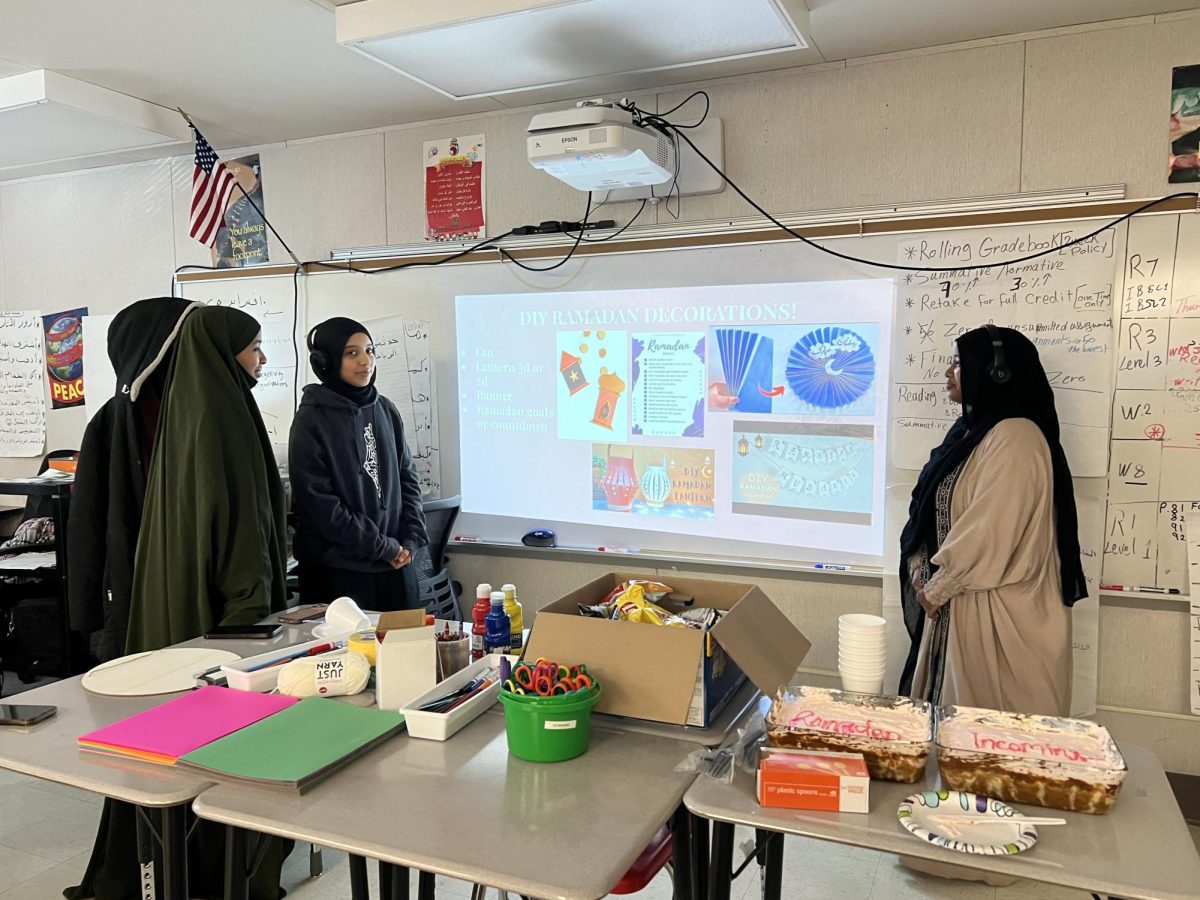It is obvious that fast food restaurants are not scarce in the Annandale area, or even the U.S., and this observation is just one of many prime examples that have led doctors to believe that fast food is the leading cause of childhood obesity in the U.S.. There are two McDonald’s, two Subways, a Wendy’s, a Burger King, a Taco Bell, a Popeyes, a KFC, various pizza shops and plenty of 7-11 stores in the Annandale area alone. AHS students often rely on these hot spots for quick and cheap meals in between sports practices and various club meetings.
“I don’t eat fast food after I work out, but I go any other time. I go get it just about anywhere that’s around,” senior Andres Hurtado said.
In the 2004 documentary Super Size Me, it was revealed that McDonald’s alone feeds more than 46 million people per day. The World Health Organization (WHO) has linked this number, and other similar numbers, to the global obesity epidemic.
“When I went to Amsterdam, the Dutch called us ‘balloon people’ because we are so big. It has a huge affect; low academics have been tied to obesity and the fact that we haven’t invested in that is a huge failure on our part,” physical education teacher David O’Hara said.
Compared to other countries, the U.S. has some of the highest rates of obesity, racking up 32 states with obesity rates over thirty percent in 2008, according to Stop Childhood Obesity, an online awarness website that entices others to fight against childhood obesity. The statistics can be staggering, with Virginia alone having a population that is one-fourth obese. But these rates are not hard to comprehend when you look at Burger King billboards and see that they now deliver.
Japan, on the other hand, is one of the healthiest countries in the world according to Nation Master, a website that gives various statistics about many countries all over the world. Despite the large number of fast food restaurants in this modernized country, the portion sizes are much smaller than those of the United States’. The size of a large soda from McDonald’s in Japan is 650 mL, while the U.S.’ is a whopping 950 mL. This proves the theory that fast-food restaurants serve to fit the community they are placed in.
“When I go to McDonald’s I get the Big Mac, large fries, and a soda. Or I get the ‘gang bang’ which is a double cheeseburger with a chicken fillet in the middle,” senior Daniel Huynh said.
The fast food restaurants can not always be the ones to blame for this epidemic. Wendy’s for instance, offers healthier alternatives like salads and grilled chicken opposed to fried, as gut- friendly options for those who are watching their weight. In many countries, items such as these are advertised as a delicious choice, while in the U.S., the Big Mac, Baconater, and Whopper seem to have stolen the limelight.
“I would order healthier options because I want to be healthy and during the season it’s better for you,”Hurtado said.
Although FCPS, and other counties around the U.S. have attempted to implement the “60 Minutes of Play” campaign, many students still do not get the time needed to burn the appropriate amount of calories.
“People look at gym as a stupid PE class, but it really does affect you. We [FCPS] has the best PE curriculum in the entire country and a lot of other school systems use our studies to base their curriculum off of,” O’Hara said, “But we can be doing more. We can to PE everyday rather than ever other day and we should expect to have it for eleventh and twelfth graders even though we have advanced PE sometimes kids either do it or they don’t and sometimes the only activity that they get is here.”
Another big contributor to the U.S.’ “big kids” is the fact that teenagers have become so reliable on their technology. This increase is texting, tweeting, and status updating has made many teenagers lazy and feel less motivated to work out according to WHO.
“It’s not like it used to be when kids would go out and play until the street lights come on ad now kids are inside on the computer Facebook-ing and having virtual friends. Now, kids don’t actually do things outside and I think that affects things,” O’Hara said.
“I don’t go to get fast food before track because I try eat healthy and I’m an athlete. I’ve eaten bad before track before and it never ends well,” sophomore Katherine Ross said.
Despite the U.S.’ attempt decrease childhood obesity rates, local school cafeterias are still serving foods that are low in nutrition. Behind the “salads” and “TruMoo” milk cartons, these choices are low in nutrition, and high in everything bad. After much digging of the FCPS website, parents are students can learn that the Chicken Fillet on Bun alone has 350 calories, 36 grams of carbohydrates, 17 grams of fat, and 4.5 grams of saturated fat. Even the “healthy salads” have 502 calories and 25 grams of fat.
“When I was a freshman they had a sub line. It was way healthier and it was worth the money. It tasted really good,” senior Israel Muche said.
Another cause of rising obesity rates in specifically FCPS is the availability of unhealthy snacks and drinks. An incessant number of vending machines containing ice cream and candy bars are placed at convenient locations for students.
Students spend most of their week at school, and being surrounded by unhealthy foods entices teenagers to consume them, despite the 43 grams of sugar in a singular can of soda. FCPS has once again contradicted themselves while attempting to increase the health of its students.








